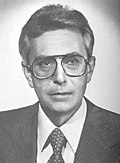
Back Eleiciones xenerales d'Italia de 1972 AST Eleccions legislatives italianes de 1972 Catalan Parlamentswahlen in Italien 1972 German Elecciones generales de Italia de 1972 Spanish Élections parlementaires italiennes de 1972 French Elezioni politiche in Italia del 1972 Italian 1972年イタリア総選挙 Japanese Eleições legislativas na Itália em 1972 Portuguese Парламентские выборы в Италии (1972) Russian Парламентарни избори у Италији 1972. Serbian
| |||||||||||||||||||||||||||||||||||||||||||||||||||||||||||||||||||||||||||||||||||||||||||||
All 630 seats in the Chamber of Deputies 316 seats needed for a majority All 315 elective seats in the Senate 162 seats needed for a majority[a] | |||||||||||||||||||||||||||||||||||||||||||||||||||||||||||||||||||||||||||||||||||||||||||||
|---|---|---|---|---|---|---|---|---|---|---|---|---|---|---|---|---|---|---|---|---|---|---|---|---|---|---|---|---|---|---|---|---|---|---|---|---|---|---|---|---|---|---|---|---|---|---|---|---|---|---|---|---|---|---|---|---|---|---|---|---|---|---|---|---|---|---|---|---|---|---|---|---|---|---|---|---|---|---|---|---|---|---|---|---|---|---|---|---|---|---|---|---|---|
| Registered | 37,049,351 (C) · 33,739,592 (S) | ||||||||||||||||||||||||||||||||||||||||||||||||||||||||||||||||||||||||||||||||||||||||||||
| Turnout | 34,525,687 (C) · 93.2% ( 31,486,399 (S) · 93.3% ( | ||||||||||||||||||||||||||||||||||||||||||||||||||||||||||||||||||||||||||||||||||||||||||||
| |||||||||||||||||||||||||||||||||||||||||||||||||||||||||||||||||||||||||||||||||||||||||||||
 Results of the election in the Chamber and Senate | |||||||||||||||||||||||||||||||||||||||||||||||||||||||||||||||||||||||||||||||||||||||||||||
| |||||||||||||||||||||||||||||||||||||||||||||||||||||||||||||||||||||||||||||||||||||||||||||
The 1972 Italian general election was held in Italy on 7 May 1972.[1] The Christian Democracy (DC) remained stable with around 38% of the votes, as did the Communist Party (PCI) which obtained the same 27% it had in 1968. The Socialist Party (PSI) continued in its decline, reducing to less than 10%. The largest increase in vote share was that of the post-fascist Italian Social Movement, which nearly doubled its votes from 4.5% to about 9%, after its leader Giorgio Almirante launched the formula of the National Right, proposing his party as the sole group of the Italian right wing. After a disappointing result of less than 2%, against the 4.5% of 1968, the Italian Socialist Party of Proletarian Unity was disbanded; a majority of its members joined the PCI.
Cite error: There are <ref group=lower-alpha> tags or {{efn}} templates on this page, but the references will not show without a {{reflist|group=lower-alpha}} template or {{notelist}} template (see the help page).
- ^ Dieter Nohlen & Philip Stöver (2010), Elections in Europe: A data handbook, p. 1048 ISBN 978-3-8329-5609-7





